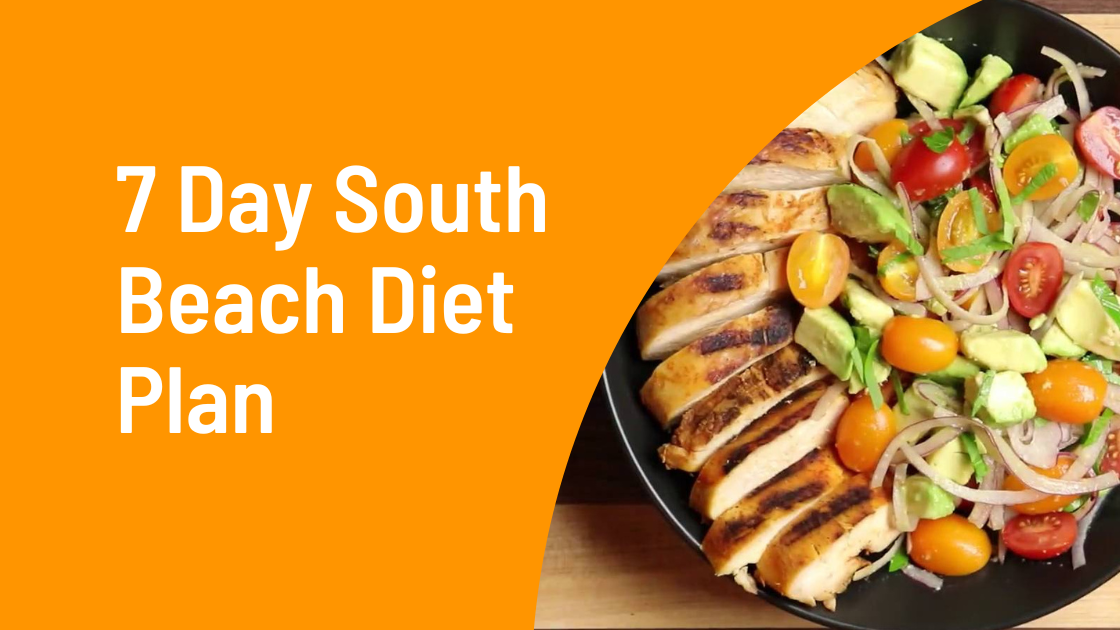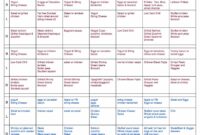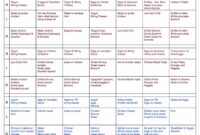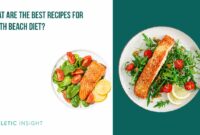South Beach Diet Ketosis offers a unique approach to weight loss, combining the principles of the popular South Beach Diet with the metabolic state of ketosis. This strategy leverages the South Beach Diet’s phased approach to healthy eating, emphasizing low-glycemic foods, while incorporating the fat-burning mechanisms of ketosis. The result is a potentially powerful combination for achieving sustainable weight loss and improved metabolic health. This guide will explore the synergy between these two approaches, examining their benefits, drawbacks, and practical implementation.
We will delve into the specifics of each diet, comparing their macronutrient ratios and outlining how they work together to induce and maintain ketosis. We will also provide practical guidance on meal planning, recipe ideas, and strategies for overcoming potential challenges, such as the “keto flu.” The goal is to equip you with the knowledge and tools needed to successfully navigate this combined approach to weight management.
Understanding the South Beach Diet
The South Beach Diet is a popular weight-loss plan that emphasizes a balanced approach to healthy eating, focusing on the types of carbohydrates consumed rather than simply restricting calorie intake. Unlike some restrictive diets, it prioritizes nutrient-rich foods and aims for sustainable weight management through lifestyle changes. Its phased approach allows for gradual adjustments, making it potentially easier to adhere to long-term.
Core Principles of the South Beach Diet
The South Beach Diet’s core principle revolves around choosing good carbohydrates over bad carbohydrates. It encourages the consumption of foods rich in fiber, protein, and healthy fats while limiting processed foods, sugary drinks, and refined carbohydrates. This approach aims to stabilize blood sugar levels, reducing cravings and promoting sustained energy. The diet also stresses portion control and regular physical activity to optimize weight loss and overall health.
Phases of the South Beach Diet
The South Beach Diet is structured into three phases: Phase 1, Phase 2, and Phase 3 (Maintenance). Phase 1 is the most restrictive, focusing on eliminating unhealthy fats and simple carbohydrates to jumpstart weight loss. Phase 2 gradually reintroduces some healthy carbohydrates while continuing to emphasize lean protein and healthy fats. Phase 3 focuses on maintaining a healthy weight and lifestyle through mindful eating habits. Each phase has specific guidelines regarding food choices and portion sizes.
Comparison with Other Popular Diets
The South Beach Diet differs from many other popular diets in its emphasis on the quality of carbohydrates consumed rather than simply the quantity. Unlike low-carb diets that often severely restrict all carbohydrates, the South Beach Diet allows for a moderate intake of complex carbohydrates in later phases. It also differs from diets focusing solely on calorie restriction, as it prioritizes nutrient density and the long-term sustainability of healthy eating habits. Compared to low-fat diets, the South Beach Diet allows for a moderate intake of healthy fats, which are crucial for satiety and hormone regulation.
Allowed and Restricted Foods in Each Phase
The following table summarizes the allowed and restricted foods in each phase of the South Beach Diet. Note that these are general guidelines, and individual needs may vary. Consult a healthcare professional or registered dietitian for personalized dietary advice.
| Phase | Allowed Foods | Restricted Foods |
|---|---|---|
| Phase 1 (2 weeks) | Lean proteins (fish, poultry, beans, tofu), non-starchy vegetables, healthy fats (olive oil, avocados), nuts and seeds. | Sugary drinks, refined carbohydrates (white bread, pasta, pastries), most fruits, high-fat dairy products, processed foods. |
| Phase 2 (until goal weight is reached) | Foods from Phase 1, plus some fruits (berries, citrus fruits), whole grains (in moderation), low-fat dairy products. | Foods restricted in Phase 1, plus high-glycemic index foods (potatoes, corn). |
| Phase 3 (Maintenance) | A balanced diet incorporating foods from Phases 1 and 2, with a focus on maintaining a healthy weight and lifestyle. | Foods that trigger weight gain or negatively impact health. This phase emphasizes mindful eating and portion control. |
Ketosis and its Role in Weight Loss
Ketosis is a metabolic state where your body primarily burns fat for energy instead of carbohydrates. This occurs when carbohydrate intake is significantly reduced, forcing the body to find alternative fuel sources. Understanding ketosis is crucial for anyone considering the South Beach Diet, as it’s a key component of its weight-loss mechanism.
Ketosis is achieved through a process involving several steps. When carbohydrate consumption is low, the body’s glycogen stores (stored glucose) are depleted. This triggers the breakdown of stored fats (lipolysis) into fatty acids. These fatty acids are then transported to the liver, where they are converted into ketone bodies. Ketone bodies – acetoacetate, beta-hydroxybutyrate, and acetone – become the primary energy source for various tissues and organs, including the brain, heart, and muscles. This shift in fuel source is what defines ketosis.
Benefits and Risks of Ketosis
Ketosis, while effective for weight loss in many individuals, is not without its potential drawbacks. The benefits primarily revolve around its ability to promote fat burning and weight loss, often leading to improvements in blood sugar control and reduced appetite. However, potential risks include the “keto flu” (headaches, fatigue, nausea, and constipation) in the initial adaptation phase, potential nutrient deficiencies if not carefully managed, and potential long-term effects that require further research. Individual responses to ketosis vary greatly, and careful monitoring is advised.
Fat Utilization for Energy During Ketosis
During ketosis, the body undergoes a significant metabolic shift. Instead of relying on glucose from carbohydrates, it breaks down stored triglycerides (body fat) through lipolysis. This process releases free fatty acids and glycerol. The free fatty acids are transported via the bloodstream to the liver, where they undergo beta-oxidation, a series of metabolic reactions that break them down into acetyl-CoA molecules. These acetyl-CoA molecules are then used to produce ketone bodies, which serve as an alternative fuel source for the body. The process is remarkably efficient at utilizing stored fat for energy production, leading to significant weight loss in many individuals.
The Role of Ketones in Energy Production
Ketones, produced in the liver during ketosis, become the primary fuel source for various tissues and organs. The brain, which typically relies on glucose, adapts to utilize ketones for energy, reducing its reliance on carbohydrate intake. This metabolic switch is a key reason for the effectiveness of ketogenic diets in weight loss. Ketones provide a readily available energy source, promoting satiety and reducing cravings. The body’s cells use ketones through a process similar to glucose metabolism, although different enzymes and pathways are involved. The energy produced from ketone oxidation is used to fuel cellular processes, contributing to overall bodily function.
Potential Benefits and Drawbacks
Combining the South Beach Diet’s emphasis on healthy fats and lean proteins with the metabolic shift of ketosis can offer a potent approach to weight loss. However, it’s crucial to understand both the potential advantages and the potential drawbacks before embarking on this dietary strategy. This section will explore the benefits, the potential side effects, and strategies for long-term success.
Benefits of Combining South Beach and Ketosis for Weight Loss
The synergy between the South Beach Diet and ketosis leverages the strengths of both. The South Beach Diet’s focus on limiting refined carbohydrates and sugars helps initiate ketosis more effectively. This, in turn, leads to several potential benefits. Ketosis promotes fat burning as the primary energy source, leading to significant weight loss. Furthermore, many individuals report increased energy levels and improved mental clarity during ketosis. The South Beach Diet’s emphasis on nutrient-rich foods helps mitigate some of the potential nutrient deficiencies associated with restrictive ketogenic diets. This combined approach, therefore, aims to optimize weight loss while minimizing potential nutritional imbalances.
Potential Side Effects of a Ketogenic Diet
The transition to ketosis can sometimes be accompanied by unpleasant side effects, commonly referred to as the “keto flu.” These symptoms typically include headaches, fatigue, nausea, constipation, and dizziness. These symptoms are usually temporary and subside within a few days to a couple of weeks as the body adapts to utilizing fat as its primary fuel source. Other potential long-term side effects, though less common, include kidney stones (especially in individuals with pre-existing conditions), elevated cholesterol levels, and nutrient deficiencies if the diet is not carefully planned. It is important to consult with a healthcare professional before starting a ketogenic diet, particularly if you have any underlying health conditions.
Long-Term Sustainability Compared to Other Weight-Loss Strategies
The long-term sustainability of any weight-loss strategy, including the combined South Beach and ketogenic approach, depends heavily on individual adherence and lifestyle changes. Compared to restrictive calorie-counting diets, the ketogenic approach can be more sustainable for some individuals because it doesn’t require meticulous tracking of every calorie consumed. However, the highly restrictive nature of the ketogenic diet can make it difficult to maintain long-term for others. Other weight loss strategies, such as incorporating regular exercise and mindful eating habits, should be considered for a holistic and sustainable approach. Ultimately, a personalized approach tailored to individual needs and preferences is crucial for long-term weight management.
Addressing Potential Side Effects and Ensuring Safe Transition to Ketosis
A gradual transition into ketosis is key to minimizing the severity of the “keto flu.” Starting slowly by gradually reducing carbohydrate intake over several days or weeks can help the body adapt more smoothly. Staying well-hydrated is crucial, as dehydration can exacerbate keto flu symptoms. Increasing electrolyte intake, particularly sodium, potassium, and magnesium, through electrolyte supplements or electrolyte-rich foods like bone broth or coconut water, can also help alleviate symptoms. Monitoring ketone levels through urine strips or blood meters can provide insights into the body’s adaptation to ketosis. Furthermore, regular check-ups with a healthcare professional are recommended to monitor overall health and address any potential concerns.
Practical Considerations and Recipes
Successfully navigating the South Beach Diet combined with a ketogenic approach requires careful planning and execution. This section provides practical guidance, including sample recipes, a sample shopping list, and meal preparation tips to help you seamlessly integrate this dietary approach into your daily life. Maintaining motivation is key, and strategies for long-term adherence are also included.
South Beach Diet-Compliant Ketogenic Recipes
The key to success lies in creating delicious and satisfying meals that align with both the South Beach Diet’s emphasis on healthy fats and lean protein and the ketogenic diet’s restriction of carbohydrates. Here are a few examples:
- Avocado Shrimp Salad: This combines the healthy fats of avocado with the protein of shrimp. A simple vinaigrette, using olive oil and lemon juice, provides flavor without added carbohydrates. Imagine creamy avocado mashed with succulent shrimp, seasoned delicately with salt, pepper, and a hint of lime.
- Salmon with Asparagus and Roasted Broccoli: Salmon is rich in omega-3 fatty acids, while asparagus and broccoli provide essential vitamins and minerals without significantly impacting carbohydrate intake. Picture perfectly cooked salmon, its flesh flaky and moist, alongside vibrant green asparagus spears and tender roasted broccoli florets. A sprinkle of sea salt and freshly cracked black pepper enhances the natural flavors.
- Chicken and Cauliflower Rice Stir-Fry: This replaces traditional rice with cauliflower rice, significantly reducing carbohydrate intake. The stir-fry can include a variety of keto-friendly vegetables and a light sauce made with coconut aminos or soy sauce (use sparingly). Visualize tender chicken strips stir-fried with crunchy cauliflower rice and colorful vegetables, all coated in a savory, slightly sweet sauce.
Weekly Shopping List for a South Beach Ketogenic Diet
This list provides a framework; adjust quantities based on individual needs and preferences.
- Protein Sources: Salmon (2 fillets), Chicken breasts (4), Shrimp (1 lb), Eggs (1 dozen)
- Healthy Fats: Avocado (3), Olive oil, Coconut oil, Nuts (almonds, walnuts)
- Low-Carb Vegetables: Asparagus (1 bunch), Broccoli (1 head), Cauliflower (1 head), Spinach (1 container), Green beans (1 lb)
- Other: Unsweetened almond milk, Chia seeds, Lemon, Spices (salt, pepper, garlic powder, onion powder)
Preparing and Cooking Keto-Friendly South Beach Meals
Meal preparation is simplified by focusing on simple cooking methods like grilling, roasting, and sautéing. Avoid breading or frying. Pre-portioning ingredients can save time and help maintain portion control.
Tips and Strategies for Maintaining Motivation and Adherence
Maintaining motivation requires a multi-pronged approach. Tracking progress, setting realistic goals, and finding a support system (friends, family, or online communities) are crucial. Experimenting with different recipes and finding keto-friendly alternatives to your favorite dishes can also help prevent boredom and maintain adherence. Remember to celebrate milestones and forgive occasional slips. Focusing on the positive changes you’re experiencing – increased energy, improved sleep, and weight loss – will reinforce your commitment.
Visual Representation of the South Beach Diet
Understanding the visual aspects of the South Beach Diet can significantly aid in adherence. A clear picture of portion sizes and the types of foods allowed in each phase is crucial for successful weight management and maintaining ketosis. This section will illustrate a typical daily meal plan and the visual progression through the diet’s phases.
The visual representation of a typical daily meal plan emphasizes colorful, nutrient-rich foods. Portion sizes are generally moderate, focusing on filling, low-glycemic foods to keep hunger at bay without excess calories. Think vibrant greens from salads and leafy vegetables, the deep reds and purples of berries, the rich yellows and oranges of peppers and squash, and the healthy browns and beiges of lean proteins and whole grains (introduced later in the diet). A balanced plate would showcase a significant portion of non-starchy vegetables, a moderate serving of lean protein (fish, poultry, or beans), and a small portion of healthy fats (avocado, nuts, or olive oil). The overall visual impression is one of freshness and abundance, avoiding the blandness often associated with restrictive diets.
Visual Guide to the South Beach Diet Phases
The South Beach Diet progresses through three phases, each visually distinct. Phase 1, the most restrictive, features a palette dominated by muted greens, browns, and the occasional vibrant color from allowed fruits and vegetables. Textures are largely firm and crisp, reflecting the emphasis on non-starchy vegetables and lean proteins. Think of a plate of grilled chicken breast with steamed broccoli and a small side of sliced cucumber – simple, clean, and visually straightforward.
Phase 2 introduces a wider range of colors and textures. The muted tones of Phase 1 are brightened by the addition of some fruits (berries, for example), and the introduction of whole grains adds a different texture to the meals. Dishes might include a quinoa salad with grilled salmon and a mixed berry vinaigrette, offering a variety of colors and textures. The visual appeal increases, reflecting the greater variety of allowed foods.
Phase 3, the maintenance phase, visually resembles a balanced and colorful plate of healthy foods. A wider range of carbohydrates is incorporated, and the overall visual impression is one of abundance and variety. Dishes might include lean proteins, whole grains, a generous portion of vegetables, and a small amount of healthy fats, creating a visually appealing and satisfying meal. The colors are rich and diverse, reflecting the balanced and sustainable nature of this phase.
Conclusion
Ultimately, the combination of the South Beach Diet and ketosis presents a multifaceted approach to weight loss that emphasizes both nutritional balance and metabolic efficiency. While potential benefits are significant, it’s crucial to understand the potential drawbacks and to approach this dietary strategy with careful planning and monitoring. By understanding the principles of both diets and following a well-structured plan, individuals can potentially harness the power of this combined approach to achieve their weight loss goals while prioritizing their overall health and well-being. Remember to consult with a healthcare professional before making significant dietary changes.




